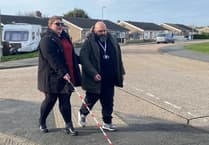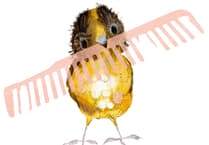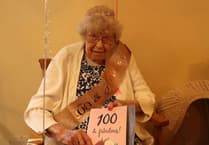Max Faulkner's association with Hindhead Golf Club was mentioned in the Herald of December 7. But he was not the only famous professional to be connected with the 97-year-old club.
Douglas Aldrich-Blake of Headley, a keen amateur war historian, reminds us that Dai Rees was another professional at the club who went on to great things. He featured in a unique, if truncated match that took place exactly 56 years ago last Sunday.
Rees had come to Hindhead in 1938, but volunteered for service soon after the outbreak of war. He served in the desert and, as Corporal Rees, became a driver of VIPs in North Africa, Sicily and Europe.
He had come to know Field Marshal Montgomery and when 'Monty', on December 16, 1944, felt in the need of a little relaxation and flew up to Eindhoven for a few holes of golf, he asked that Rees, who was there as driver of the AOC's car, should join him on the course.
The Field Marshal wrote in his memoirs: "Our game was soon interrupted by a message to say that the Germans had launched a heavy attack that morning on the front of the First American Army, and the situation was obscure. I said goodbye to Rees and flew straight back to Zonhoven."
The heavy attack turned out to be the 'Battle of the Bulge' – the German's last major counter-offensive, and Dai Rees later gave a more colourful account of what happened. It was, in fact, shades of Francis Drake receiving news of the imminent arrival of the Armada while playing bowls.
"We had reached the sixth hole, with 'Monty' more than having held his own, when an aide-de-camp rushed out on to the course. 'Monty, facing an eight-foot putt, looked up inquiringly at the perspiring and excited officer. "The Germans have attacked, sir, at five points along the front in the Ardennes."
'Monty' stayed cool. "Very well," he said briefly. "I'll be along directly." He lined up his eight-footer carefully. He holed out.
Rees returned to Hindhead Golf Club after the war and renewed his contacts with the Field Marshal, giving lessons to his son, David, before, in 1947, moving on to become professional at South Herts GC.
David had been a pupil at Amesbury, Hindhead and Montgomery, who knew the Reynolds family who ran the school, made Amesbury his war-time HQ from 1940-44.
After the war, Montgomery bought the house at Isington, Binsted where he lived until the end of his life.
Back at Hindhead, Dai Rees discovered that there were no golf balls. Factories had been manufacturing more deadly objects. So he put an advertisement in the Herald and received a wonderful response.
He later recalled: "Hundreds of old balls flowed into my house and Eunice and I spent many evenings scrubbing the dirty paint off them with caustic soda and repainting them a brilliant white.
"I issued this much-sought-after ammunition to our members on a careful rationing system. The rough was now waist-high after being completely uncontrolled for five years, and a ball hit more than two yards off the fairway was lost."
Rees recalled his Alsatian, Rex, finding 238 balls in one night. One, with a distinctive blue triangle, was retrieved 32 times.
Although he was 34 when he left Hindhead, Dai Rees just got better and better. A superb match-play golfer, his career reached its pinaccle in 1957 when, as captain and player, he led Britain & Ireland to Ryder Cup victory at Lindrick.
This 71/2-41/2 win is considered to have started the golfing boom in Britain.
Rees, second only to Henry Cotton in tournament wins, won the News of the World Matchplay four times, reaching eight finals, and he was runner-up three times in the Open. In 1954, he lost by one shot to Peter Thomson and, in 1961, he was runner-up to Arnold Palmer, again by one stroke. He died in 1983.



